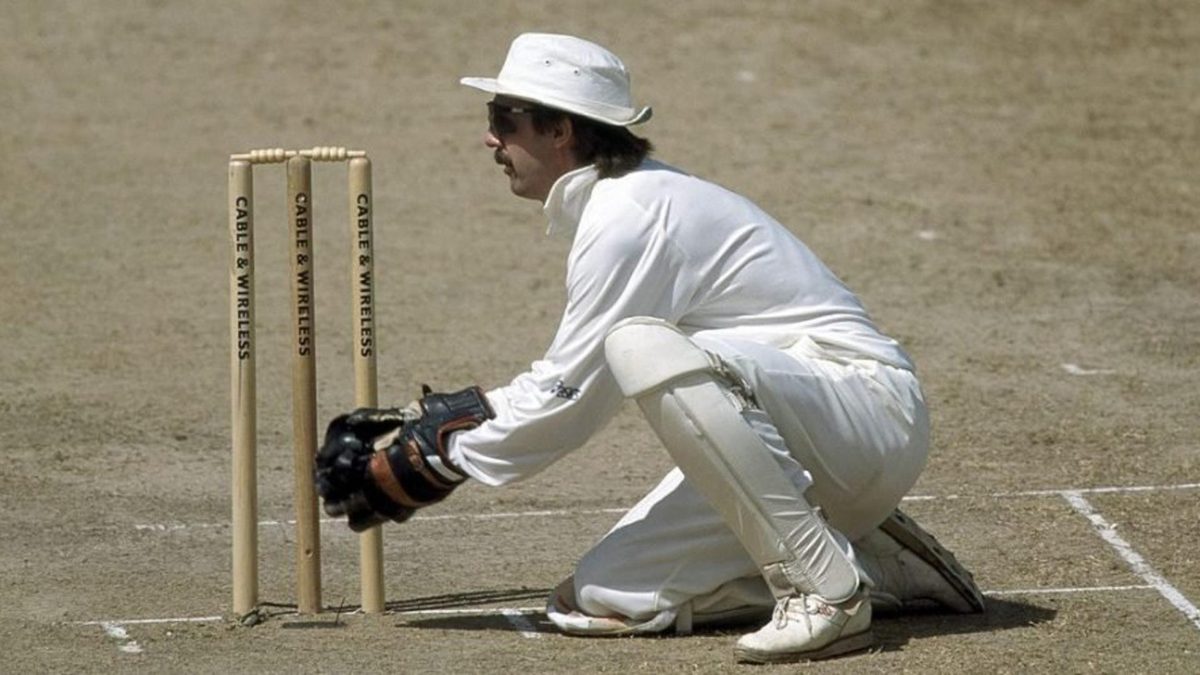
Sam Stow recalls watching wicketkeeping perfection from Jack Russell and tells us what made the England gloveman his cricketing hero.
First published in 2007
First published in 2007
As a nipper I was always agile and quick across the turf, and those vivid green streaks on my whites were badges of a boy who loved to slide about. So it was strange that I didn’t come to wicketkeeping earlier, but I guess I was more drawn to sexy cricket, to the whole batting and bowling thing, than the social outcast role of the ’keeper. Inspired by my first coach, I dreamily mapped out a future as an impish left-armer in the Tufnell mould, and had pretensions to follow in the line of those southpaw strokemakers who had so elegantly made their way in the game.
But somehow, these early aspirations never really blossomed. Small hands and puny muscles played a part for sure, but as I drifted towards adolescence, I began mentally, as much as physically, seeing myself as a wicketkeeper. It helped that when the stumper’s gauntlets were thrust upon me at the age of 12 – a stopgap replacement for the floundering incumbent – I soon found I had a natural aptitude for the role, but my future remained in doubt until I first heard about this man named after a dog.
My early coaching was piecemeal, to say the least, but I was privileged to receive several sessions of tuition from club-mate and former Essex ‘keeper Adrian Brown. Browny had the reputation as one of the best stumpers in the country – I am told that had it not been for his hapless batting, he could have made it at the very highest level – and so I took his word for gospel. And, in the few chats we had, there was always one name that came up again and again – Jack Russell.
Before I’d even seen the man, I felt an affinity to him. Team-mates had corroborated Browny’s assessment of Russell, as ‘the best in the business’, and ‘a real character’ to boot. I quickly learnt that a lot of ‘keepers were ‘real characters’ or a ‘little bit mad’ and, as a wannabe wit and pseudo-intellectual, I was eager to see both the mitts and the man.
And so, it was, in the winter of 1995/96, that I first clapped eyes – knowingly at least – on the man himself. His scruffiness has since inspired me to sport a selection of ill-attended wicketkeeping kit (though I’m yet to find a hat quite like Jack’s), but it was his brilliance behind the sticks and his unorthodoxy in front, that endeared me to Russell. In and out of the Test team in the Nineties – for which I will never forgive the selectors – Russell was the undisputed stumper on the tour of South Africa.
A washout in the first Test denied me my first proper look at the man in action, but it was worth the wait, when in the second Test at Johannesburg I saw a remarkable all-round display from Russell that, to this day, remains the best performance from a wicketkeeper that I have ever seen.
Jack Russell standing up to seamers was quite something to watch.
— Wisden (@WisdenCricket) May 2, 2020
The thing about this job, I always think, is that it’s damn difficult. Only those who do it know it, and only those who are great make it look easy. And so, at the age of 13 – and in my ‘keeping infancy – what I saw from Russell was perfection. 11 catches – some of them tough, some of them regulation – in the match, was a new world record, but it was the easy agility, simple side-step and certainty of his work that made me realise that I had a long way to go with the gloves, and that this was the man to follow.
Since that game, if a batsman nicked one, I just knew that Jack would take the catch and, hand on heart, I cannot remember him dropping a catch in all the time I followed him. Sure, this may be a case of selective memory on the part of a lad who believed that Russell was invincible, even magical, but you never saw him miss the regulation catches that the so-called ‘wicketkeeper-batsmen’ of today do, all too regularly.
If that wasn’t enough, Russell followed up his performance with the gloves with a four-and-a-half-hour vigil alongside Mike Atherton, to save the game. That he amassed only 29 runs from 235 balls only added to my admiration, and the dichotomy of a man so naturally suited to the gloves but inherently awkward with the bat, was not a frustration but a pleasure for a boy, who – as time went by – found a similar trait in his own game. His stoicism that famous day, coupled with a technique that does a disservice to the unorthodox among us, made me love him all the more. 29 runs from 235 balls. Three fours in 235 balls. Now that’s my sort of player.
Ever since, even the dullest game of county cricket would become fascinating with Russell behind the stumps. Even as an Essex fan, there was no-one more pleased than yours truly when Gloucestershire enjoyed their recent period of dominance in the one-day game, and the sight of Jack making stumpings for fun off the likes of Jon Lewis and Mark Alleyne never failed to astonish me. Even today, I could watch re-runs of Gloucestershire in the late Nineties and early Noughties and marvel at the man’s work. Unlike some, the eccentricities of Jack Russell are not the qualities by which I remember the man. To me he was the best in the business, as it should be with all our heroes.








